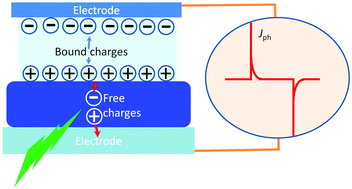Organic optoelectronic interfaces with anomalous transient photocurrent
Abstract
Organic optoelectronic devices have received much attention in recent years, mainly owing to their flexibility and ease of fabrication. However, poor charge carrier mobility of most organic materials and the strong binding energy of excitons pose significant design restrictions on such devices, which limit their steady-state photoconduction performance. Recently it has been shown that organic semiconductor/insulator interfaces can produce photocurrent transients, remarkably decreasing the influence of poor mobility and strong exciton binding energy. Especially, fast operation speed and a great freedom in device architecture can be achieved. In this review, the various observations of photocurrent transients reported in the literature, as well as current efforts to utilize these photocurrent transients such as in transient-type photodetectors, color sensors and artificial retinas, are highlighted, and the various physical mechanistic analyses that underpin their operation are discussed.


 Please wait while we load your content...
Please wait while we load your content...